If you have been experiencing low water pressure in your kitchen sink, don’t worry – you’re not alone. This is a common problem that many homeowners face. This article will discuss some of the causes of low water pressure in the kitchen sink, as well as some solutions that you can try. It will also provide some tips on how to maintain optimal water pressure in your kitchen sink. So whether your water pressure is currently low or you just want to make sure it stays high, read on for helpful information!
How to Use Kitchen Sink Properly?
Using a kitchen sink properly is essential for both efficiency and sanitation. Here are some tips to ensure that everything in your kitchen runs smoothly:
- Clean out the sink regularly. It’s important to clean out the sink after each use, especially when preparing food, to avoid bacteria buildup which can lead to cross-contamination. Start by running hot water through the drain and then scrubbing it down with soap and a sponge or cloth. Be sure to rinse off any residual soap as well;
- Avoid putting too much strain on the pipes. Heavy items like pots and pans should not be placed in the sink; instead, place them directly on the countertop or cutting board for washing. Doing this will help prevent clogs or overflows;
- Keep the sink free of grease and food particles. Grease, food particles, and other debris can easily build up in the sink over time and lead to blockages. Be sure to thoroughly rinse out dishes before washing them as well as wipe down any residue on kitchen surfaces;
- Run hot water after each use. Running hot water can help clear away any stuck-on grime or residue and also help prevent bacteria from forming on the surface of the sink;
- Use an appropriate cleaning product for your sink material. Different materials require different cleaning products, so make sure you are using one that is suitable for your particular type of sink surface (stainless steel, porcelain, etc.);
- Always use a drain stopper when washing dishes. A drain stopper can help to prevent debris from going down the sink and clogging the pipes. Be sure to remove it after each use and clean it to avoid any buildup of bacteria or dirt;
- Make sure all drains are clear before using the sink. Check your plumbing system regularly for clogs or blockages to ensure everything is running smoothly. If you do find any clogs, contact a professional plumber as soon as possible to avoid further issues with your kitchen sink;
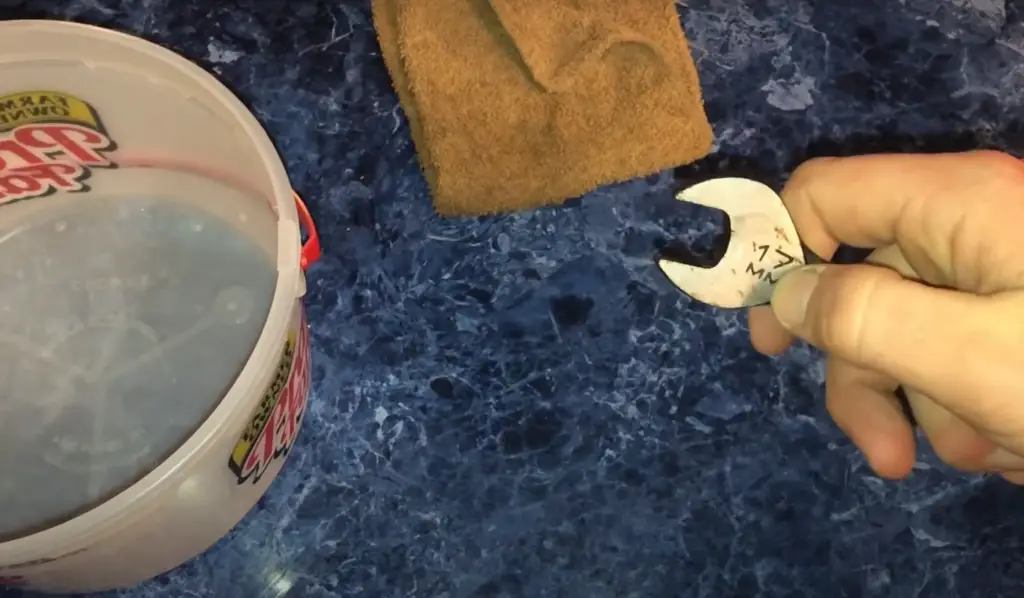
Following these tips will ensure that your kitchen sink remains safe and efficient for many years to come [1]!
Reasons Leading to Low Kitchen Water Pressure
Broken Water Lines
Aerator Clogs
The aerator is responsible for controlling the flow of water from the kitchen faucet. If this gets clogged with debris, then it can reduce the amount of water pressure coming out of the tap significantly. In most cases, cleaning or replacing the aerator should solve the problem.
Clogged Pipes
It is also possible that there is a blockage in your home’s pipes that is causing an obstruction and therefore reducing water pressure. This might be caused by corroded pipes, mineral deposits, or even a lack of maintenance and cleanliness around your plumbing system over time. If you think this may be the cause of your low kitchen water pressure, then it would again be advisable to contact a professional plumber as soon as possible to inspect and clear any blockages.
Water Pressure Valve Problems
The water pressure valve is responsible for regulating the amount of water pressure in your home. If this has been set too low, then it can reduce the amount of flow coming out of your kitchen faucets. Similarly, if the valve has become blocked or damaged, then this can also lead to a decrease in water pressure. Adjusting or replacing the valve should resolve the issue and restore water pressure to normal levels.
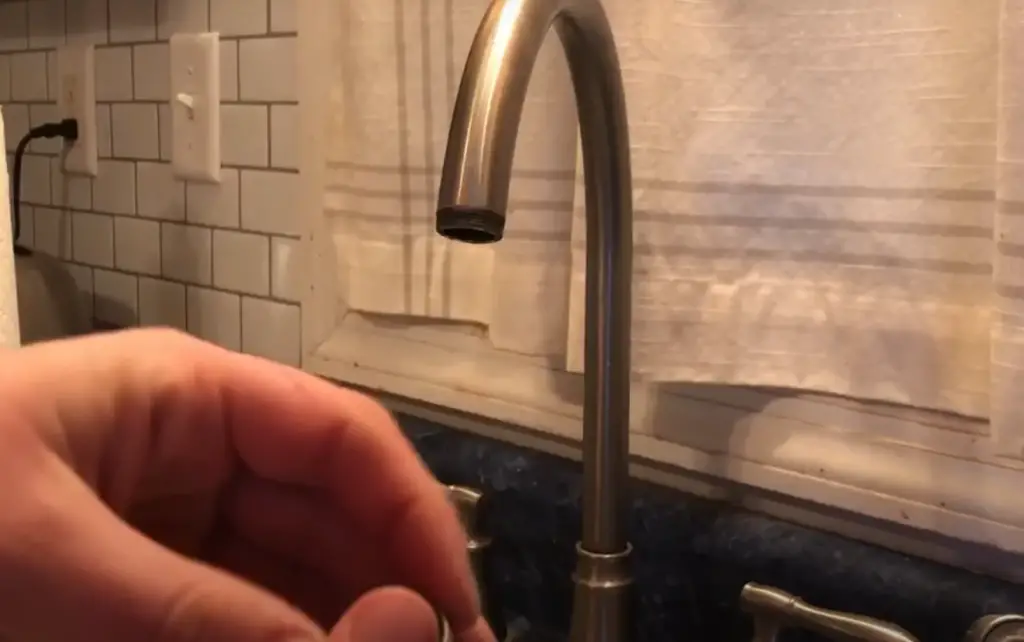
Cartridge Clogs
Certain kitchen faucets contain a cartridge inside which helps to control the flow of water. If this becomes clogged with debris or other contaminants, then it can result in low water pressure coming out of the taps. Cleaning or replacing this cartridge should solve the issue.
Leaks
Small water leaks can also cause low kitchen water pressure as the water is not reaching the taps with enough force. Therefore, it is important to check all of your plumbing fixtures for signs of any possible leaks and make sure that they are fixed and sealed to ensure there isn’t any further loss of pressure.
Shut-off Valve Errors
The shut-off valve is responsible for controlling the flow of water in your home. If this becomes damaged or blocked, then it can lead to an obstruction and a decrease in kitchen water pressure. You should check that the valve works correctly and if necessary call out a professional plumber for inspection and repairs [2].
How to Fix and Increase Low Water Pressure in Kitchen Sink?
If you are experiencing low water pressure in your kitchen sink, there are a few things that you can do to try and increase or fix the issue:
- Check the faucet aerator: A common cause of low water pressure is a clogged faucet aerator. The aerator is located at the tip of the spout and it has small holes that can easily become blocked by debris over time. To clean it, unscrew the aerator and use an old toothbrush to scrub away any sediment buildup inside. Then replace it on the faucet and check for any improvement in water flow;
- Flush out the pipes: If cleaning out the aerator doesn’t help, the pipes in your kitchen sink may be clogged with debris and sediment. To flush them out, turn off the water supply and disconnect the hoses from both the hot and cold sides. Place a bucket underneath to catch any excess water and then run each of the hoses one at a time until all of the debris has been flushed away;
- Replace any rust: If you notice any rusty spots on your pipes or faucets, it could be restricting water flow. To fix this, you will need to replace any rusted parts with new ones;
- Install a pressure regulator: Finally, if none of these steps help improve your water pressure, you may want to consider installing a pressure regulator. This device can be installed on the main water supply line and it helps to regulate the pressure of the water entering your home;
By following these steps, you should be able to fix or increase the low water pressure in your kitchen sink. If none of these solutions work, you may need to call a professional plumber for help. They will be able to identify and repair any underlying issues that are causing the low water pressure [3].
How To Maintain Kitchen Sinks?
Kitchen sinks require regular maintenance to keep them looking clean and working properly. Over time, food particles, grease, and other debris can accumulate in the sink, leading to bad odors and clogs. Here are a few tips for keeping your kitchen sink clean:
- Clean the Sink Regularly: To minimize bacteria buildup, wash the entire sink with soap and water at least once a week. For tougher stains, use an abrasive cleaner or baking soda paste to scrub down the surface. Be sure to rinse away all residue afterward;
- Use Strainers: Place strainers on both sides of your drain to catch food particles that would otherwise go down the drain and cause clogs over time;
- Prevent Clogs: Never pour grease down the drain! Grease can congeal and accumulate on the inner walls of your pipes, causing blockages and backups in your plumbing;
- Clean the Faucet: Use a soft cloth to regularly wipe down the faucet with warm, soapy water to keep it clean and shiny;
- Sanitize with Vinegar: To help remove bacteria from your sink, fill up half of it with hot water and add one cup of vinegar. Let the mixture soak in for 15 minutes before draining it away;
- Avoid Abrasive Scrubbers: Steel wool or other abrasive scrubbing tools may damage your sink over time by scratching the surface or clogging the pipes. Stick to soft clothes and sponges for cleaning;
- Unclog Drains: If your drain is clogged, try using a plunger or an auger before calling a plumber. Boiling water can also help clear away grease buildup in the pipes;
- Call a Plumber: If all else fails, call in a professional plumber to inspect and clean your kitchen sink thoroughly. They may be able to repair any underlying problems that are causing issues with your plumbing and keep it running smoothly for years to come;
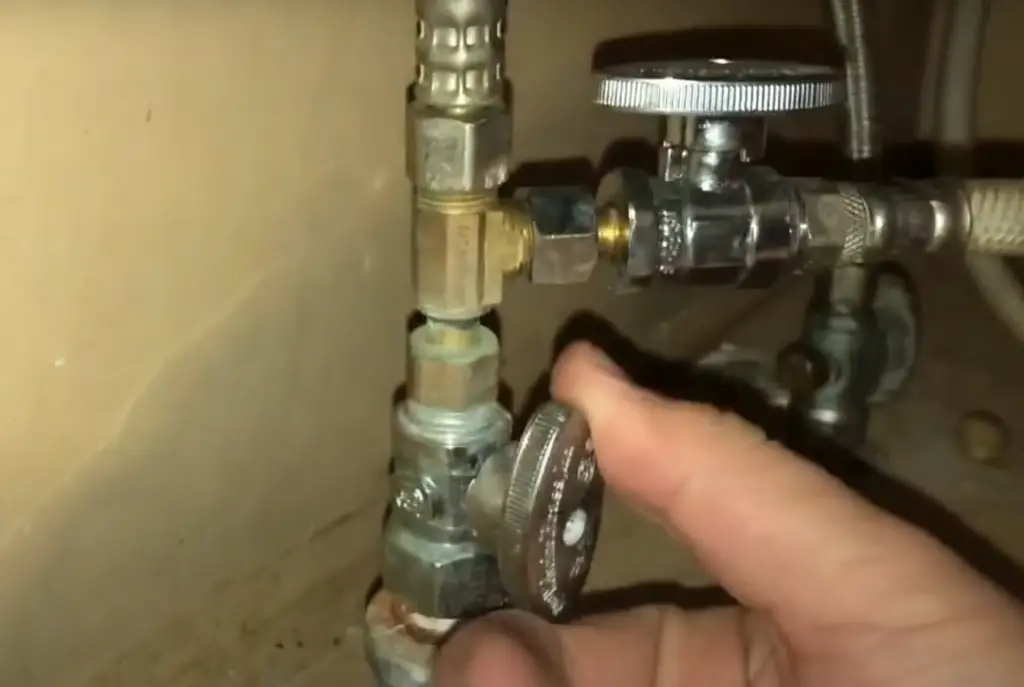
These tips should help keep your kitchen sink looking and functioning like new over time! Regular maintenance is key when it comes to keeping it healthy – so don’t forget to give it some love [4]!
FAQ
How do I fix the low water pressure in my kitchen sink?
If you are experiencing low water pressure in your kitchen sink, there are several possible causes. The most common cause of low water pressure is a clogged aerator or sediment buildup in the plumbing lines. You can try cleaning the aerator with vinegar and a brush to remove any blockages or debris. If that does not fix the issue, it may be due to older pipes that have built up sediment over time. If this is the case, you will need to call a plumber for professional assistance. In some cases, low water pressure may also be caused by a faulty valve or faucet component which will also require professional repair to fix.
Why is my water pressure low in the kitchen only?
What causes low hot water pressure?
Low hot water pressure can be caused by various factors. The most common cause is a clogged aerator or sediment buildup in the plumbing lines. You can try cleaning the aerator with vinegar and a brush to remove any blockages or debris. If that does not fix the issue, it may be due to older pipes that have built up sediment over time. If this is the case, you will need to call a plumber for professional assistance. In some cases, low hot water pressure may also be caused by a faulty valve or faucet component which will also require professional repair to fix.
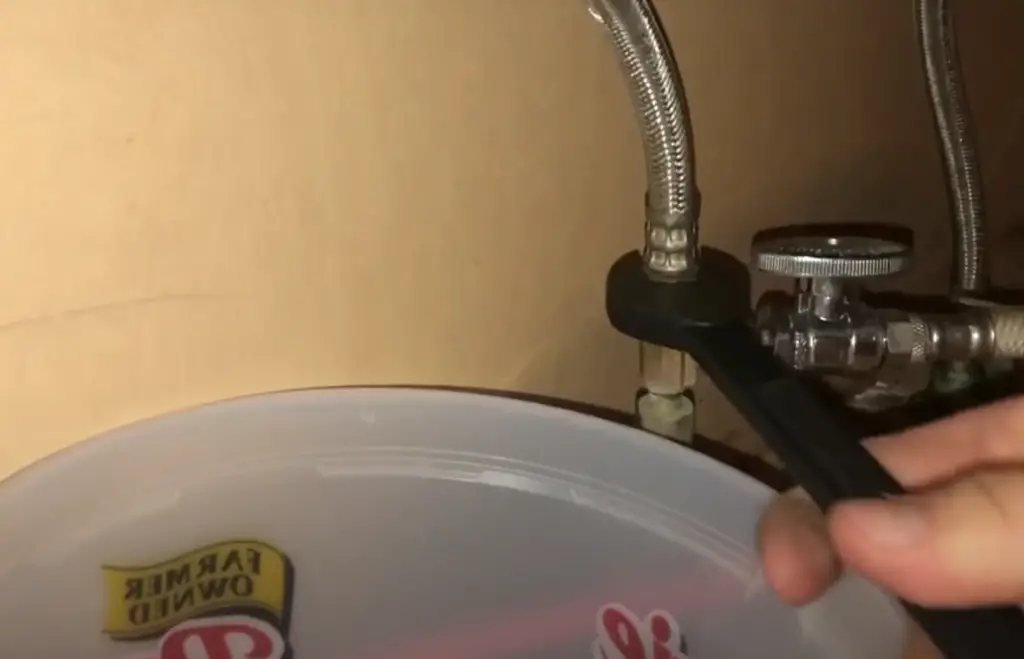
What are some signs of low water pressure?
Some signs of low water pressure include weak or inconsistent water flow from your faucets, showerheads, and toilets; stagnation of water in your pipes; and loud noises when the water is running. If you notice any of these signs, it may be due to a clogged aerator or sediment buildup in your plumbing lines. You can try cleaning the aerator with vinegar and a brush to remove any blockages or debris. If that does not fix the issue, it may be due to older pipes that have built up sediment over time. If this is the case, you will need to call a plumber for professional assistance.
How can I make my faucet pressure stronger?
If you want to improve the water pressure coming out of your faucet, you can try cleaning the aerator with vinegar and a brush to remove any blockages or debris. If that does not fix the issue, it may be due to older pipes that have built up sediment over time. If this is the case, you will need to call a plumber for professional assistance.
What should I do if I have no hot water?
If you find that you have no hot water, the most likely cause is a faulty water heater. You will need to call a plumber to inspect and repair your water heater if needed. It may also be caused by a broken thermostat or an issue with the gas line connected to your water heater. If this is the case, you will need to contact a licensed professional to diagnose and fix the problem.
What could be causing my faucets to make loud noises?
Loud noises coming from your faucets can be caused by various factors such as clogged aerators or sediment buildup in the plumbing lines. You can try cleaning the aerator with vinegar and a brush to remove any blockages or debris. If that does not fix the issue, it may be due to older pipes that have built up sediment over time. If this is the case, you will need to call a plumber for professional assistance. Another possible cause of noisy faucets could be a faulty valve or faucet component which will also require professional repair to fix.
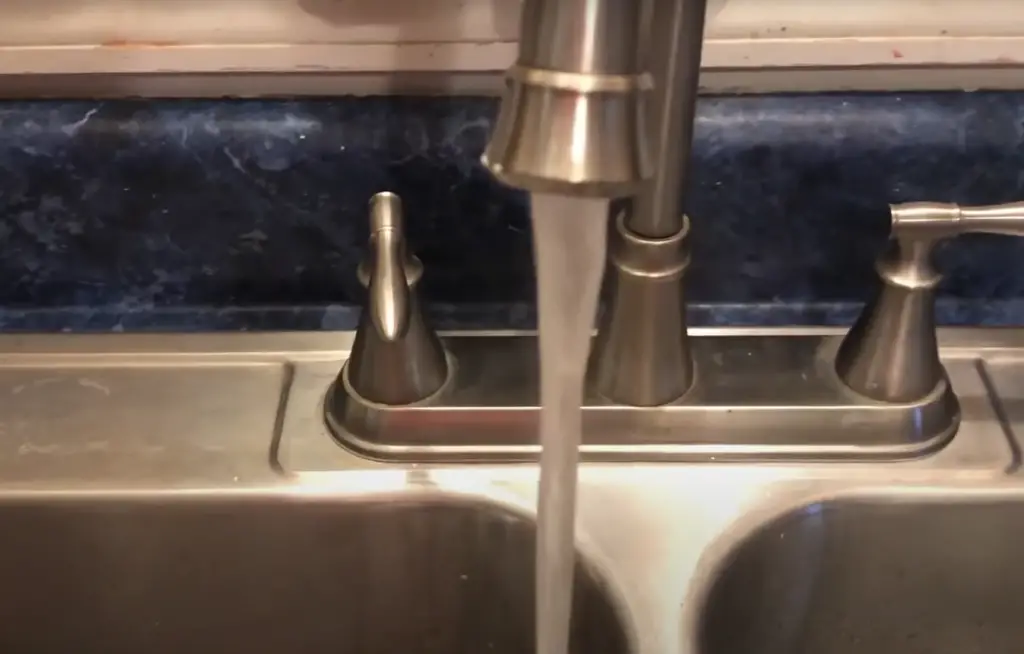
What if my hot water pressure is low but cold is fine?
If your hot water pressure is low but cold is fine, it could be caused by various factors such as a clogged aerator or sediment buildup in the plumbing lines. You can try cleaning the aerator with vinegar and a brush to remove any blockages or debris. If that does not fix the issue, it may be due to older pipes that have built up sediment over time. If this is the case, you will need to call a plumber for professional assistance. In some cases, low hot water pressure may also be caused by a faulty valve or faucet component which will also require professional repair to fix.
How to install a kitchen sink properly?
Installing a kitchen sink properly requires several steps. First, you need to measure the countertop or cabinet for the new sink and mark where it will go. Next, use a drill to make holes in the surface for mounting clips. Secure these clips into place with screws. Then attach the drainpipe from underneath and connect it to the tailpiece of the sink. Finally, apply silicone caulk around the edges of your sink before securing it in place with mounting brackets. Make sure all connections are secure and tight before testing out your newly installed kitchen sink!
Useful Video: Easy fix for low water pressure in kitchen sink or bathroom sink
Conclusion
Some people can have problems with water flow in a kitchen sink. The most common issue is an obstructed drain pipe. To clear it, you can use either a snake or chemical cleaners like Drain-O. If neither of those methods is successful, then you should call in a professional plumber to come and help solve the problem. Additionally, properly maintaining your sink’s plumbing system with regular checkups and preventative measures will ensure that any potential future issues are caught before they get out of hand. By following these simple steps, you can keep your kitchen sink functioning smoothly for years to come.
References:
- https://nuflow.net/your-kitchen-rules/
- https://www.estesair.com/blog/how-to-fix-low-water-pressure-in-kitchen
- https://www.wikihow.com/Adjust-Faucet-Water-Pressure
- https://www.raincitymaids.com/simple-guide-easily-clean-maintain-kitchen-sink/





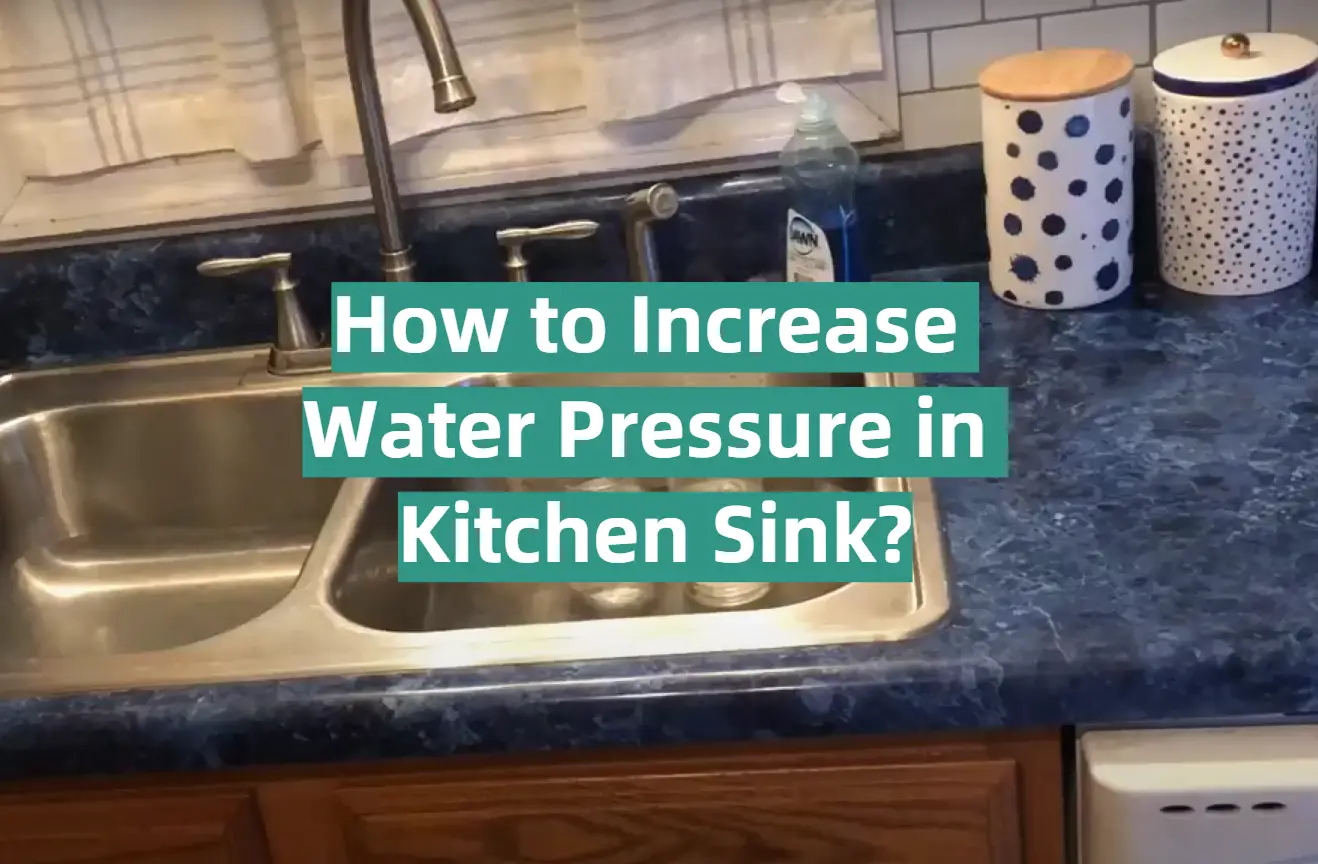




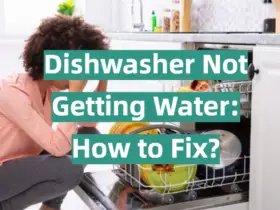
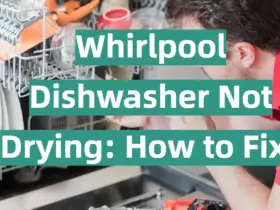
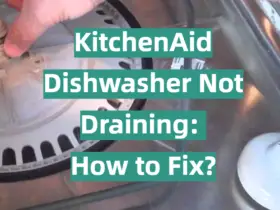
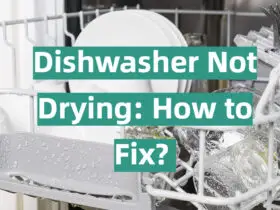
Leave a Reply